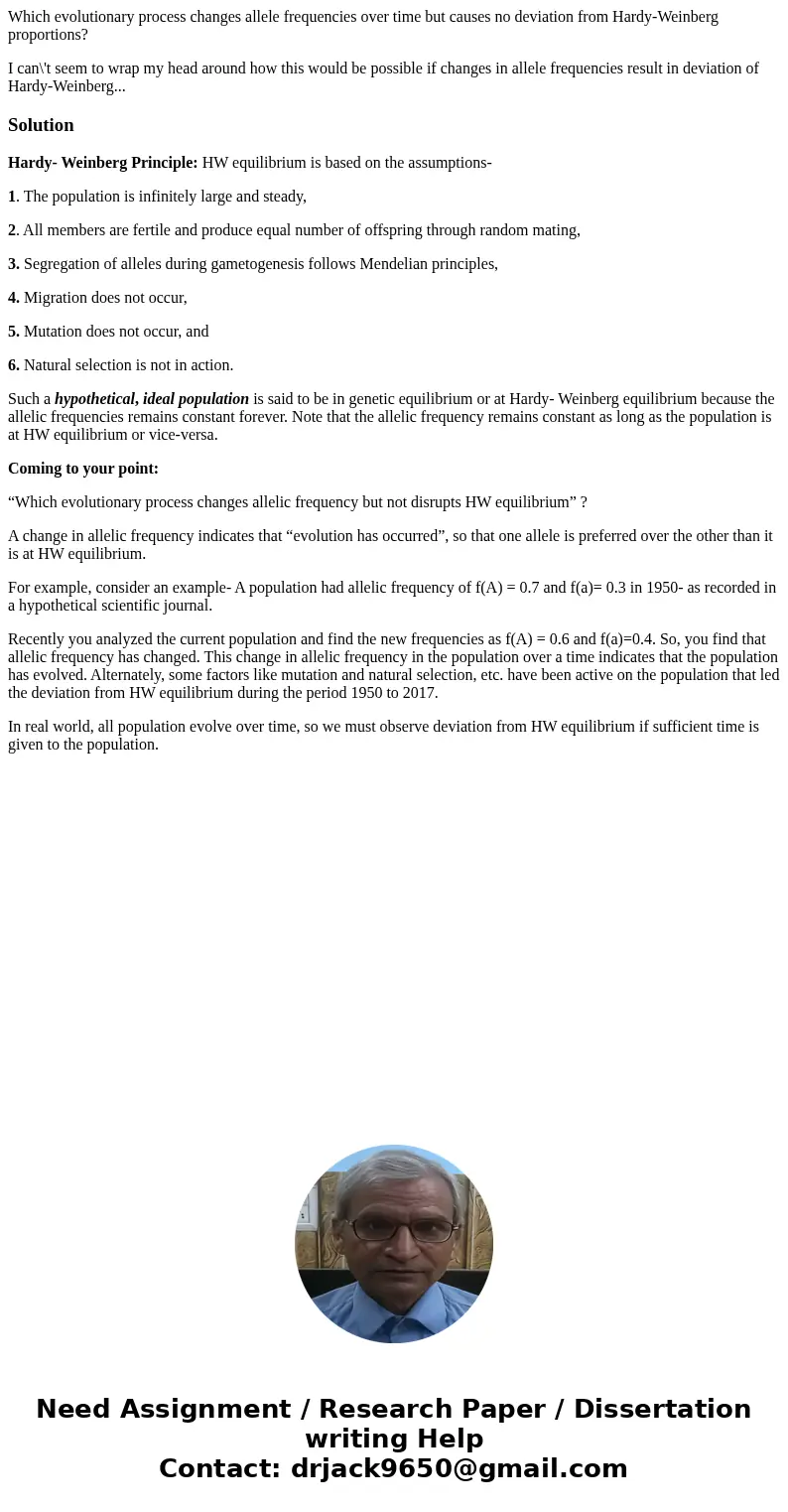Which evolutionary process changes allele frequencies over t
Which evolutionary process changes allele frequencies over time but causes no deviation from Hardy-Weinberg proportions?
I can\'t seem to wrap my head around how this would be possible if changes in allele frequencies result in deviation of Hardy-Weinberg...
Solution
Hardy- Weinberg Principle: HW equilibrium is based on the assumptions-
1. The population is infinitely large and steady,
2. All members are fertile and produce equal number of offspring through random mating,
3. Segregation of alleles during gametogenesis follows Mendelian principles,
4. Migration does not occur,
5. Mutation does not occur, and
6. Natural selection is not in action.
Such a hypothetical, ideal population is said to be in genetic equilibrium or at Hardy- Weinberg equilibrium because the allelic frequencies remains constant forever. Note that the allelic frequency remains constant as long as the population is at HW equilibrium or vice-versa.
Coming to your point:
“Which evolutionary process changes allelic frequency but not disrupts HW equilibrium” ?
A change in allelic frequency indicates that “evolution has occurred”, so that one allele is preferred over the other than it is at HW equilibrium.
For example, consider an example- A population had allelic frequency of f(A) = 0.7 and f(a)= 0.3 in 1950- as recorded in a hypothetical scientific journal.
Recently you analyzed the current population and find the new frequencies as f(A) = 0.6 and f(a)=0.4. So, you find that allelic frequency has changed. This change in allelic frequency in the population over a time indicates that the population has evolved. Alternately, some factors like mutation and natural selection, etc. have been active on the population that led the deviation from HW equilibrium during the period 1950 to 2017.
In real world, all population evolve over time, so we must observe deviation from HW equilibrium if sufficient time is given to the population.

 Homework Sourse
Homework Sourse